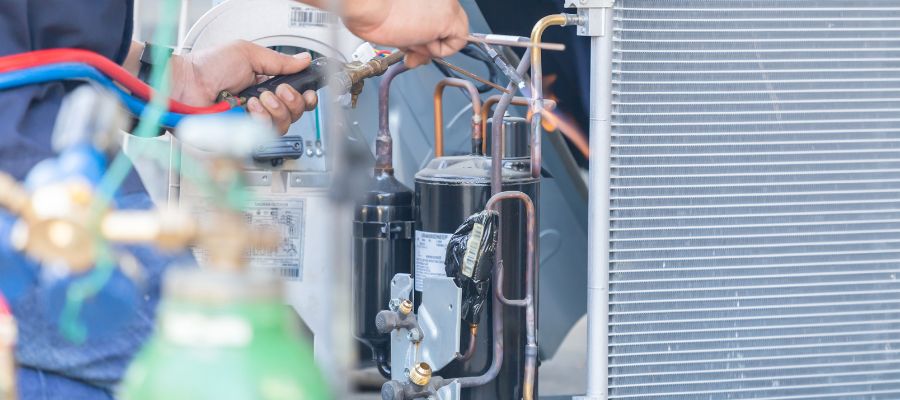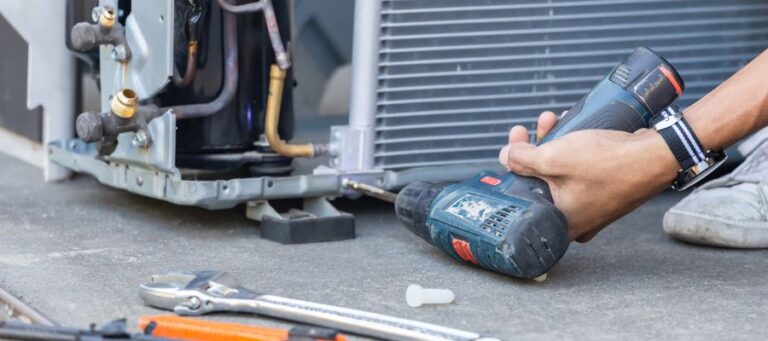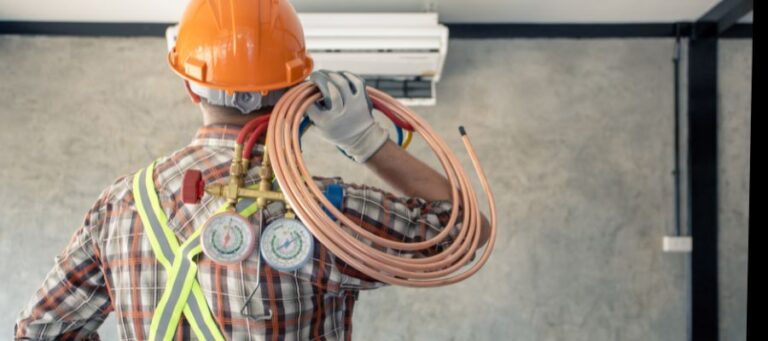

HVAC Services
Get Professional Repairs From The Area's Trusted HVAC Technicians. Ask About Our Services! We Offer Professional Heating & Cooling System Repairs And Guarantee Long-Lasting Results.
Got Question? Call us: (850) 678-2665Financing
The Comprehensive Guide to HVAC Troubleshooting: Understanding, Diagnosing, and Resolving Common Issues

HVAC systems are integral to maintaining comfort in both residential and commercial settings. Despite their importance, these systems can sometimes falter, causing inconveniences and potential discomfort. This comprehensive guide on HVAC troubleshooting seeks to arm you with knowledge about common HVAC problems, how to diagnose them, and appropriate solutions.
Understanding HVAC Systems
Before diving into troubleshooting, it’s crucial to understand what constitutes an HVAC system. HVAC stands for Heating, Ventilation, and Air Conditioning, and it encompasses several components working together to regulate indoor temperature, humidity, and air quality.
Heating
This usually involves a furnace or a heat pump that generates heat distributed throughout your home or building.
Ventilation
This component helps exchange indoor air with fresh outdoor air, maintaining good air quality.
Air Conditioning: The air conditioning unit extracts heat from the indoor air, effectively cooling your space during warmer months.
Common HVAC Problems and Their Symptoms
There are several common HVAC problems that you may encounter. Below are some of the frequent issues and their tell-tale signs:
- Insufficient Heating or Cooling: If your HVAC system doesn’t produce enough heat or cool air, it could indicate a problem with the thermostat settings, air filters, or the HVAC unit itself.
- Poor Airflow: Poor airflow often points to issues with the ductwork, such as leaks or blockages, or a failing fan motor.
- Uneven Temperature Distribution: If some areas are cooler or warmer than others, it may suggest issues with the ductwork or insulation.
- Frequent Cycling: If your system constantly turns on and off, it might indicate a sizing issue or a problem with the thermostat.
HVAC Troubleshooting Guide
Here is a step-by-step guide to diagnosing and possibly resolving some common HVAC issues:
- Verify Thermostat Settings: Ensure the thermostat is set to the correct mode (heating or cooling) and that the desired temperature is appropriate.
- Check Air Filters: Dirty or clogged air filters can impede airflow and cause your system to work harder. Regularly inspect and replace filters as necessary.
- Inspect Outdoor Units: Ensure there’s no debris obstructing the outdoor unit and that it’s in good working condition.
- Check Circuit Breakers: If your system isn’t turning on, it may be due to a tripped circuit breaker.
- Examine Ductwork: Leaks or blockages in the ductwork can significantly impact your HVAC system’s performance.
HVAC Maintenance Tips
Preventive maintenance is key to extending the lifespan of your HVAC system and ensuring it runs efficiently. Here are some tips:
Regular Filter Replacement
Change your air filters every 30 to 90 days, depending on usage and filter type.
Seasonal Inspections
Schedule professional inspections of your HVAC system each spring and fall.
Ductwork Maintenance: Regularly inspect your ductwork for leaks or blockages and address any issues promptly.
Routine Cleaning
Clean your HVAC components, such as the outdoor unit and vents, to keep them free from dust and debris.
HVAC Troubleshooting FAQs
Our FAQ section addresses common queries related to HVAC troubleshooting and provides actionable advice for each.
Conclusion
While understanding basic HVAC troubleshooting can help you diagnose common problems, remember that HVAC systems are complex. Some issues require professional attention. It’s crucial to hire certified professionals to prevent further damage to your system and ensure safe and efficient operation. Regular maintenance is also a key preventative measure, helping keep your HVAC system in top shape throughout its lifespan.
By equipping yourself with this HVAC troubleshooting guide, you can enjoy a comfortable, energy-efficient environment in your home or commercial space. When in doubt, don’t hesitate to contact a professional to ensure your HVAC system gets the care it needs.
Remember to always prioritize safety in all DIY HVAC troubleshooting efforts, use the appropriate tools, and consult with professionals when necessary. HVAC systems are invaluable investments, and their longevity and performance largely depend on how well they are maintained and serviced.
With all these comprehensive insights into HVAC troubleshooting, we hope you’re now better prepared to identify and resolve basic HVAC issues, or to engage a professional when more complex challenges arise.



